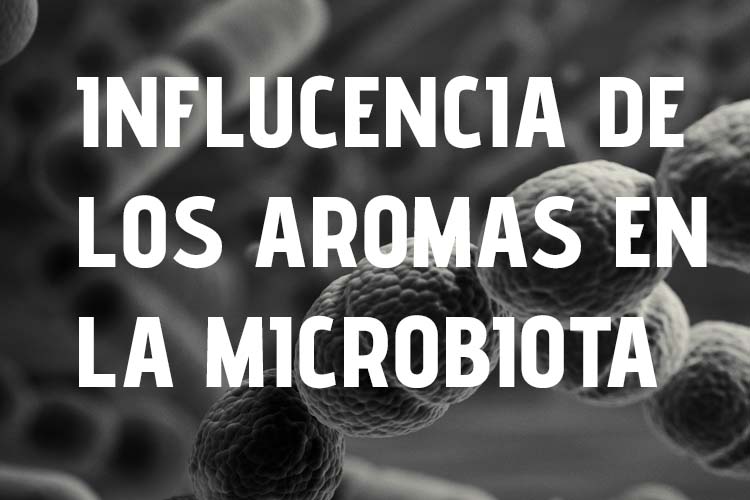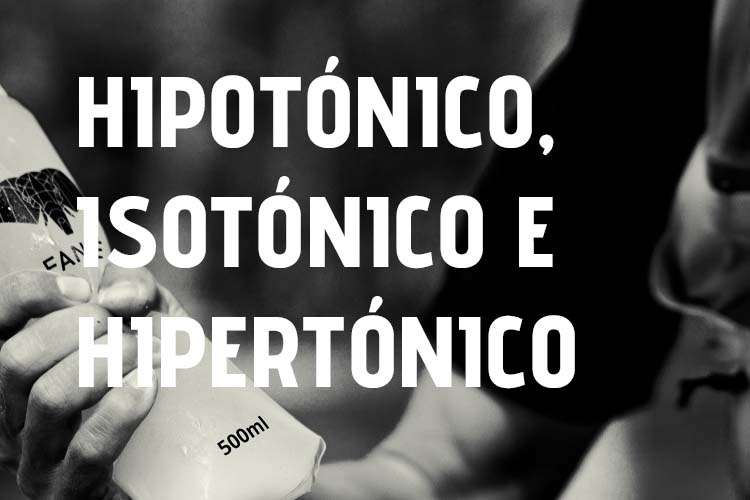The Relationship Between Gut Microbiota and Sports Performance: Impact of Flavors and Preservatives
The gut microbiota plays a fundamental role in the health and performance of athletes. Factors such as diet, the use of natural energy gels, the intake of unflavored isotonic drinks, and exposure to certain additives can influence its balance. In this article, we'll analyze how artificial flavors and preservatives affect the gut microbiota and what nutritional strategies can help maintain a healthy gut ecosystem to improve athletic performance.
Impact of Artificial Flavors and Preservatives on the Gut Microbiota
The Role of Artificial Flavors in the Microbiome
Artificial flavorings are found in numerous products, including sports drinks and energy supplements. Although designed to improve palatability, some studies suggest that certain flavoring compounds can alter the gut microbiota. These additives can influence the composition of gut bacteria, affecting the production of short-chain fatty acids, which play a key role in metabolic health and athletic performance.
Preservatives and their Effect on the Intestinal Flora
Preservatives are widely used in processed foods and sports supplements to extend their shelf life. However, some can negatively impact the gut microbiota by reducing bacterial diversity and promoting the growth of harmful microorganisms. Preservatives such as parabens and sulfites have been observed to induce inflammation and impair the absorption of essential nutrients for endurance athletes.
Relationship Between Gut Microbiota and Sports Performance
A balanced microbiota plays critical roles in energy metabolism, immunity, and muscle recovery. Recent studies have shown that athletes with a diverse gut microbiota tend to have better endurance, lower inflammation, and greater efficiency in energy production.
Key Factors:
- Energy Metabolism: Certain intestinal bacteria promote the production of short-chain fatty acids, which can be used as an energy source by muscles during prolonged exercise.
- Inflammation Regulation: A balanced microbiota helps reduce chronic inflammation, improving recovery and decreasing the risk of injury.
- Strengthening the Immune System: Healthy intestinal flora protects against infections, reducing periods of inactivity due to illness.
Nutritional Strategies to Optimize the Intestinal Microbiota
To improve gut microbiota and boost athletic performance, it's essential to follow a balanced diet and carefully select supplements.
Key Foods for a Healthy Microbiota
- Fermented Foods: Products such as yogurt, kefir, kimchi, and sauerkraut contain probiotics that promote the balance of the intestinal microbiota.
- Prebiotic Fiber: Foods rich in soluble fiber, such as bananas, oatmeal, and asparagus, help feed the beneficial bacteria in your gut.
- Natural Energy Gels: Choosing gels without preservatives or artificial flavors helps reduce the risk of intestinal flora disturbances. Like our entire range of FANTÉ gels.
- Isotonic drinks without flavors: Sports drinks without artificial sweeteners or additives can improve hydration without affecting the intestinal microbiota, such as our isotonic drinks .
- Sources of Polyphenols: Cocoa, green tea, and red berries contain bioactive compounds that promote intestinal bacterial diversity.
Supplementation and Microbiota
Probiotic supplements have been shown to be beneficial for digestive health and physical performance in athletes. Those containing Lactobacillus and Bifidobacterium strains can improve carbohydrate digestibility, reduce gastrointestinal discomfort, and strengthen the immune system. It's advisable to include quality supplements, preferably free of artificial flavors and preservatives.
Unnecessary additions
- Harpagophytum : An exhaustive search from 1958 to 2025 found 219 studies of which there are 4 meta-analyses and where they state that ''they do not provide relevant results to support the claim that harpagophytum reduces stomach bloating. It is important to note that, although harpagophytum is used to treat inflammation, there is no conclusive evidence to support its use to reduce stomach bloating. Additionally, some studies have pointed to possible gastrointestinal adverse effects associated with the consumption of harpagophytum, such as diarrhea, dyspepsia, and nausea. The maximum daily consumption amount is around 50 to 100mg per day.
- BCAAs : After an exhaustive search from 1958 to 2025, two results were found for the relationship between BCAAs and sports performance, from which it is not concluded that adding them during exercise would benefit us.
- Minerals other than chloride, sodium, potassium, magnesium, or calcium: Currently, in 2025, no studies have shown that we should supplement with these minerals during exercise. This is because we only secrete chloride, sodium, potassium, magnesium, and calcium through sweat, in quantities that we need to replenish.
Recommendations for Safe Consumption of Sports Supplements
Since many sports products contain additives that can negatively affect the gut microbiota, it is important to consider:
- Choose supplements without artificial colors or preservatives.
- Choose natural energy gels that contain simple, easily digestible ingredients, such as Fanté gels.
- Look for flavorless isotonic drinks that provide electrolytes without affecting the gut microbiota.
Conclusion
The gut microbiota plays an essential role in athletic performance and overall health. Consuming products with artificial flavors and preservatives can disrupt its balance, affecting energy production and immune response. To optimize the microbiota, athletes should prioritize a diet rich in fiber, fermented foods, natural energy gels, and flavorless isotonic drinks.
Adopting these strategies can make a difference in endurance, recovery, and injury prevention, allowing athletes to maximize their performance in a healthy and sustainable way.
Literature
- Álvarez-Herms, J., Burtscher, M., González-Benito, A., Corbi, F., & Odriozola-Martínez, A. (2024). The gut microbiota characterization of a world-class mountain trail runner during a complete competition season: A case report. Journal of Applied Physiology . https://doi.org/10.4085/1062-6050-0143.24
- Fernández-Sanjurjo, M., Fernández, J., & Tomás-Zapico, C. (2024). Dynamics of gut microbiota and short-chain fatty acids during a cycling grand tour: Related to exercise performance and modulated by dietary intake. Nutrients , 16(5), 661. https://doi.org/10.3390/nu16050661
- Grosicki, G.J., Pugh, J., & Wosinska, L. (2019). Ultra-endurance triathlon competition shifts fecal metabolome independent of changes to microbiome composition. Journal of Applied Physiology , 135(3), 549-558. https://doi.org/10.1152/japplphysiol.00024.2023
- Bian X, Chi L, Gao B, Tu P, Ru H, Lu K. Gut Gut microbiome response to sucralose and its potential role in inducing liver inflammation in mice. Front Physiol. 2017; 8: 487.
- 22. Palmnas MS, Cowan TE, Bomhof MR, Su J, Reimer RA, Vogel HJ, et al. Low-dose aspartame consumption differentially affects gut microbiota-host metabolic interactions in the diet-induced obese rat. PLoS One. 2014; 9(10): e109841.
- 23. Suez J, Korem T, Zeevi D, Zilberman-Schapira G, Thaiss CA, Maza O, et al. Artificial sweeteners induce glucose intolerance by altering the gut microbiota. Nature. 2014; 514(7521): 181-186.
- EMA : European Union herbal monograph on Harpagophytum procumbens radix
- Treatment of patients with hip and knee osteoarthritis with an aqueous extract of devil's claw
- Berdonces (2009) Great illustrated dictionary of medicinal plants: description and applications. Amber Ocean.
- http://www.kew.org/science-conservation/plants-fungi/harpagophytum-procumbens-devil's-claw
- Crespo and Navarro (2012) Harpagophytum root in the treatment of rheumatic conditions. Journal of Phytotherapy 12(1): 5-14.
- EMA-HMPC. Community Herbal Monograph on Harpagophytum procumbens DC. and/or Harpagophytum zeyheri Decne, radix. London: EMA. Doc. Ref.: EMEA/HMPC/251323/2006. Adopted: 6-11-2008.
- Akhtar and Haqqi (2012) Current nutraceuticals in the management of osteoarthritis: a review. Ther Adv Musculoskelet Dis 4(3): 181–207.
- Parenti et al. (2015) Involvement of the heme-oxygenase pathway in the antiallodynic and antihyperalgesic activity of Harpagophytum procumbens in rats. Molecules 20(9): 16758-69.
- Haseeb et al. (2016) Harpagoside suppresses IL-6 expression in primary human osteoarthritis chondrocytes. DOI: 10.1002/jor.23262.
- Georgiev et al. (2013) Harpagoside: from Kalahari Desert to pharmacy shelf. Phytochemistry 92:8-15.




Leave a comment
This site is protected by hCaptcha and the hCaptcha Privacy Policy and Terms of Service apply.